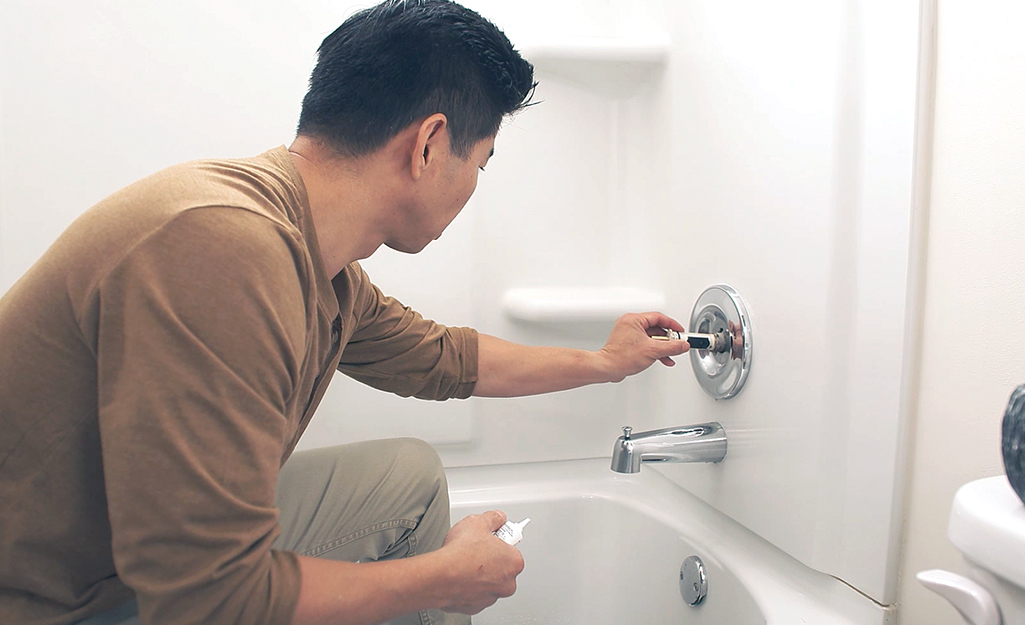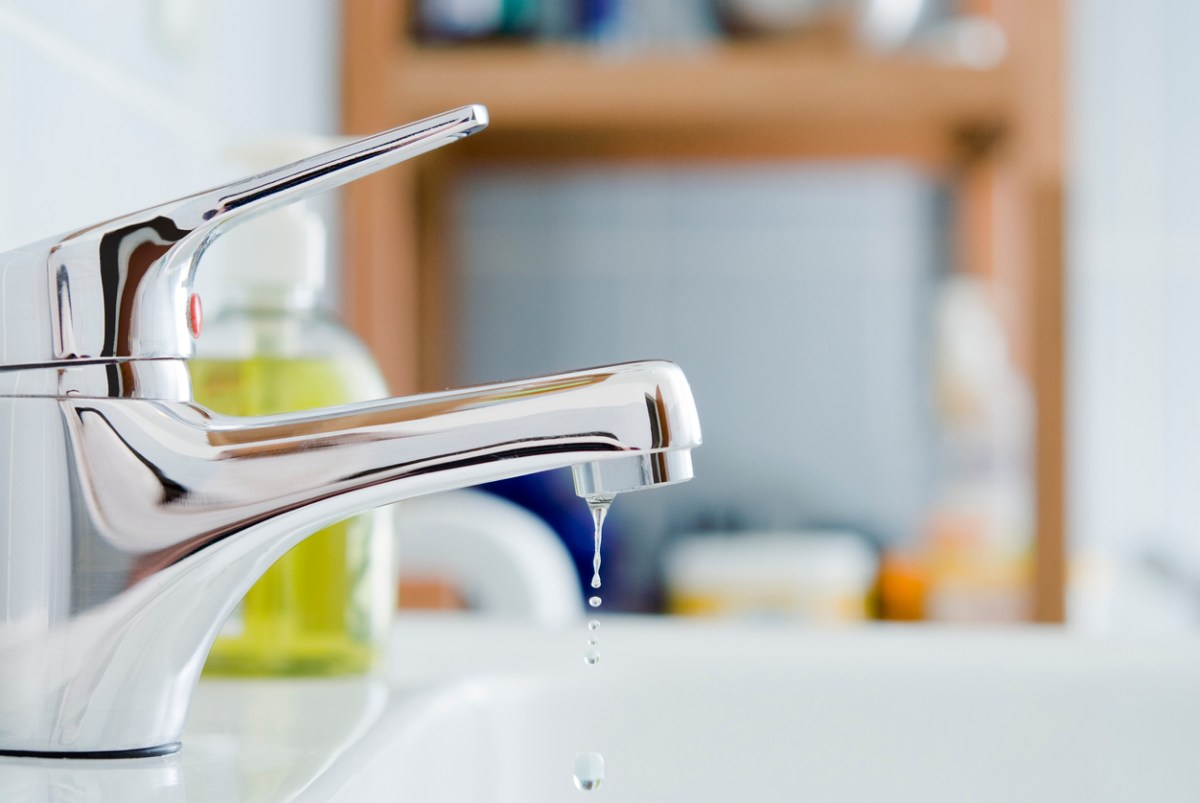How It's Essential to Fix a Leaking Faucet
How It's Essential to Fix a Leaking Faucet
Blog Article
Nearly everybody is bound to have their personal idea involving Should I Repair or Replace a Leaky Faucet?.

Leaking taps might look like a minor trouble, yet their influence surpasses simply the annoyance of the sound. From wasting water to incurring unnecessary financial costs and health dangers, neglecting a leaking faucet can result in various consequences. In this article, we'll delve into why it's crucial to resolve this typical home issue promptly and properly.
Wastefulness of Water
Environmental Impact
Dripping taps contribute considerably to water wastage. According to the Epa (EPA), a single tap leaking at one drip per secondly can lose more than 3,000 gallons of water annually. This not only stress water resources however also impacts communities and wildlife based on them.
Step-by-Step Overview to Repairing a Dripping Tap
Tools Needed
Prior to attempting to take care of a trickling faucet, gather the essential tools, including a flexible wrench, screwdrivers, substitute components (such as washers or cartridges), and plumber's tape.
Typical Tap Issues and Their Solutions
Recognize the sort of tap and the certain concern triggering the drip. Usual problems include worn-out washers, rusty shutoff seats, or damaged O-rings. Describe manufacturer instructions or online tutorials for step-by-step guidance on repairs.
Financial Costs
Increased Water Bills
Beyond the environmental impact, dripping taps can blow up water expenses significantly. The built up wastage over time converts right into higher energy costs, which might have been avoided with prompt repair work.
Possible Building Damages
Furthermore, long term leaking can lead to harm to fixtures and surface areas surrounding the faucet. Water buildup can trigger discoloration, rust, and also structural problems if left neglected, causing additional fixing costs.
Health and wellness Problems
Mold and Mold Development
The constant existence of wetness from a trickling faucet creates a suitable setting for mold and mildew growth. These fungis not only jeopardize indoor air top quality but likewise present wellness threats, specifically for individuals with respiratory conditions or allergies.
Waterborne Diseases
Stagnant water in trickling taps can become a breeding place for germs and other pathogens, increasing the risk of waterborne conditions. Impurities such as Legionella germs flourish in stagnant water, possibly bring about severe diseases when ingested or breathed in.
DIY vs. Professional Repair
Pros and Cons of Do It Yourself Repair Work
While some might try to fix a trickling faucet themselves, do it yourself repair work feature their own collection of challenges. Without correct knowledge and devices, DIY efforts can aggravate the issue or result in incomplete repairs, lengthening the trouble.
Advantages of Working With a Specialist Plumber
Employing a specialist plumber ensures that the underlying root cause of the trickling tap is addressed efficiently. Plumbing professionals possess the competence and tools to detect and fix tap concerns successfully, conserving time and decreasing the risk of further damage.
Environmental Duty
Specific Payment to Preservation
Taking obligation for taking care of leaking faucets aligns with more comprehensive initiatives toward water conservation and ecological sustainability. Every person's actions collectively make a considerable impact on maintaining priceless resources.
Lasting Living Practices
By focusing on prompt fixings and embracing water-saving practices, people contribute to lasting living methods that profit both present and future generations.
Safety nets
Routine Upkeep Tips
To avoid trickling faucets, execute routine upkeep such as cleaning aerators, checking for leakages, and replacing damaged components quickly. In addition, consider setting up water-saving tools or upgrading to much more effective components.
Importance of Prompt Repair Works
Addressing leaking taps as quickly as they're seen prevents further water wastage and prospective damage, eventually conserving both water and cash over time.
Effect On Property Value
Perception of Well-Maintained Residential Or Commercial Property
Keeping a property in good condition, consisting of resolving upkeep problems like dripping taps, boosts its viewed value and worth amongst prospective buyers or lessees.
Impact on Resale Value
Properties with properly maintained plumbing fixtures, including taps, command higher resale values in the realty market. Addressing trickling faucets can add to a positive impact during building evaluations and arrangements.
Final thought
Resolving a dripping faucet surpasses simple ease; it's a vital action towards conserving water, minimizing economic costs, and guarding wellness and home. Whether through DIY repairs or specialist support, acting to deal with trickling taps is a tiny yet impactful means to advertise liable stewardship of sources and add to a much healthier, a lot more sustainable future.
How to Fix a Leaky Faucet: Step-by-Step Repair Guide
A leaky faucet may seem like a simple annoyance, but if it's not fixed promptly, that leak could cost hundreds to potentially thousands. From water damage to mold, mildew, and high water bills, even a tiny leak can be catastrophic if left unattended. Damage like this can even affect the overall value of your home, so it's important to take the right approach for leaky faucet repair. You may need the help of a plumber in some cases, but we've got a few tips you can try on how to fix a leaky faucet before calling the pros.
Four Faucet Types
When you're learning how to fix a leaky faucet, the first step is knowing what kind of faucet you're working with! There are four common types.
Cartridge Faucets
Cartridge faucets come in one- or two-handled varieties. In one-handled cartridge faucets, hot and cold water combines in a single cartridge. In the two-handled versions, hot and cold water are controlled separately and mixed in the faucet.
Ball Faucets
Ball faucets have a single lever you push up and down to adjust the pressure and rotate to change the temperature. A slotted metal ball controls the amount of water allowed into the spout.
Compression Washer Faucets
They're the oldest type of faucet, but they're still used in many homes — especially older ones. Compression faucets have two separate handles that, when turned, raise or lower the washer that seals a water valve. This valve stops water from flowing through the faucet when it is turned off.
Disc Faucets
Disc faucets rarely need to be repaired due to their maintenance-free design. The water flow is controlled by two discs — the upper one raises and lowers against a fixed lower disc, creating a watertight seal. If your disc faucet starts leaking, you may need to replace the seals or clean residue buildup from the inlets.
Fixing a Leaky Faucet
Step 1: Turn Off the Water
Whether you're learning how to fix a leaky bathtub faucet or how to fix a leaky kitchen faucet, always turn off the water supply to your working area when you're fixing a leak. The last thing you want is a flood added to your list of things to fix.
Look for the shutoff valves below your sink or around the tub and turn them clockwise to stop the water flow. If your faucet doesn't have shutoff valves, you may need to turn off the water for the whole house. Check to make sure it's off by turning the faucet on. If nothing comes out, you're ready to start the repair.
Step 2: Take Apart the Faucet
How you disassemble your faucet depends on the type of fixture you have. You can use a flathead screwdriver to remove the caps on top of the handle or handles for cartridge and compression faucets. Inside, you should see handle screws. Unscrew these with a screwdriver to remove the handle.
Disc- and ball-style faucets will typically have an inlet screw near the handle, and removing that will reveal the interior of the faucet.
Detach the Valve Stem
For cartridge- and compression-style faucets, you'll see the inner valve stem or cartridge once you remove the faucet handles. If you have a compression faucet, unscrew the brass valve stem. If you have a cartridge faucet, pull out the cartridge. If your cartridge has been in place for a while, it may require some tools or extra force to remove it due to mineral deposits.
Examine and Replace Parts
Once you've removed the parts, check them out to confirm what needs to be replaced. You may see corroded rubber washers, O-rings, stems, or cartridges. On a ball-style faucet, check the seats and springs for damage.
If you need to repair a leaky disc faucet, check the inlet and seals on the lower disc.
Once you determine what parts must be replaced, visit your local hardware store. Bring the damaged parts with you to ensure you can purchase the correct components to replace them.
Clean Valves and Faucet Cavity
If you've removed a stem or cartridge, you may notice mineral buildup in the faucet's threads. Use white vinegar to clean the valve seat by soaking it for a few minutes, then scrub it away with a soft toothbrush and rinse with warm water. You can also clean the interior of the faucet in the same way.
Reassemble the Faucet
Once your faucet is cleaned and the required parts have been replaced, it's time to reassemble it. Put the pieces back together and slowly turn the water supply back on. Doing this slowly is crucial because too much initial water pressure can damage the new hardware you've just installed.
https://homewarranty.firstam.com/blog/how-to-fix-leaky-faucet

As a fervent reader on How to Fix a Dripping or Leaky Faucet , I thought sharing that topic was really helpful. If you please take the time to share this article if you enjoyed reading it. Thanks a lot for your time. Revisit us soon.
Report this page